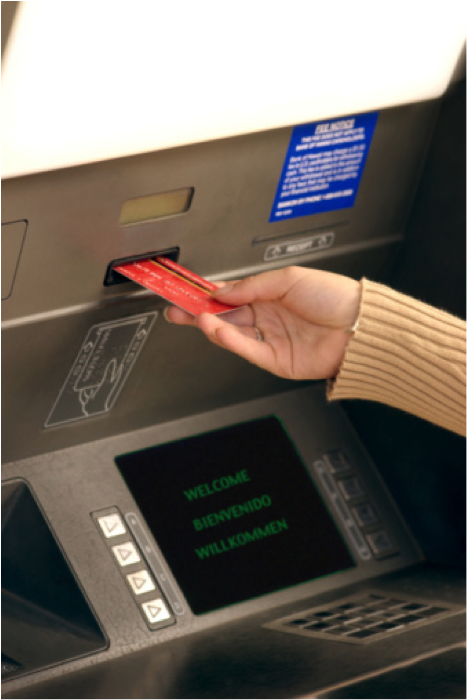 If life takes Visa, and Mastercard covers everything except those priceless moments money can’t buy, then all I need to enjoy my trip overseas is my credit card, right? Not necessarily, as some Americans have found during trips abroad over the past few years by getting stuck in train stations or embarrassed in restaurants and shops when their credit cards are declined. This can happen even when travelers take the recommended precautions, like making sure their accounts are in good standing and contacting their card issuer before the trip to make sure fraud detection safeguards aren’t activated by the first overseas purchase.
If life takes Visa, and Mastercard covers everything except those priceless moments money can’t buy, then all I need to enjoy my trip overseas is my credit card, right? Not necessarily, as some Americans have found during trips abroad over the past few years by getting stuck in train stations or embarrassed in restaurants and shops when their credit cards are declined. This can happen even when travelers take the recommended precautions, like making sure their accounts are in good standing and contacting their card issuer before the trip to make sure fraud detection safeguards aren’t activated by the first overseas purchase.
The main reason for these unfortunate mixups has to do with differences in the card manufacturing technology used in the United States versus parts of Europe. You might remember a lot of buzz about “smart card technology” some years back. Smart cards have microchips embedded in them, meaning they can hold a lot more information. The embedded circuit in the card also offers additional security features, beyond that of a traditional magnetic stripe card. While US credit card issuers and businesses are still weary of the new system, international credit cards—particularly those issued in the UK, Scandinavia, and other parts of western Europe—have embraced smart card technology. They're commonly referred to as "chip and PIN" cards because of the process adopted for their use. Once the card is swiped the cardholder enters a PIN. Restaurants carry portable swipers so customers can run the card and enter their PINs right at the table. And the PIN is considered more secure than the signature that seals the deal for traditional magstripe card transactions. Americans often run into problems when the PIN is asked for by merchants. Though American credit cards also have PINs, many cardholders don’t know what theirs is since PINs aren’t commonly used in the United States. And though the credit card industry has taken steps to ensure that American cards are still accepted throughout Europe, in practice some vendors won’t know the procedure for running an American credit card. To avoid hiccups, American travelers can take a few extra steps when they’ll be traveling in Europe, or other areas where chip and PIN technology is dominant. One is to learn the PINs for their credit cards before heading out. Another is to learn to speak up—in most situations, the vendor will be able to run a signature-based transaction on the American credit card, but might need some guidance first. Don't be shy. If one’s travel is likely to go through a lot of unattended ticket kiosks, it's always a good idea to have some cash handy. Be careful, however, of using your credit card to perform a PIN-based ATM transaction to get that cash. Doing so will be treated as a cash advance, which comes with much higher rates and fees than a traditional credit card transaction. Speaking of fees, you’ll want to know what kind of fees, if any, your credit card company plans to tack onto your foreign purchases before you leave town. Many credit card issuers add an additional percentage to every purchase made. Over the course of a vacation, this can quickly add up. Depending on which bank issued your card, you might see commissions as high as 3% per transaction—or you might not see any. This is a case where shopping around and reading the fine print will really pay off. The Citi ThankYou Premier Card, for example, never charges foreign exchange fees, which is why I always have mine with me when traveling overseas. In addition, some major banks reportedly have plans to offer “traveler’s credit cards” or prepaid cards of the chip and PIN variety in the near future. However, such cards will probably also have special fees built in, so you’ll want to compare them to your standard credit card to make sure you’re always getting the best deal on international charges.



